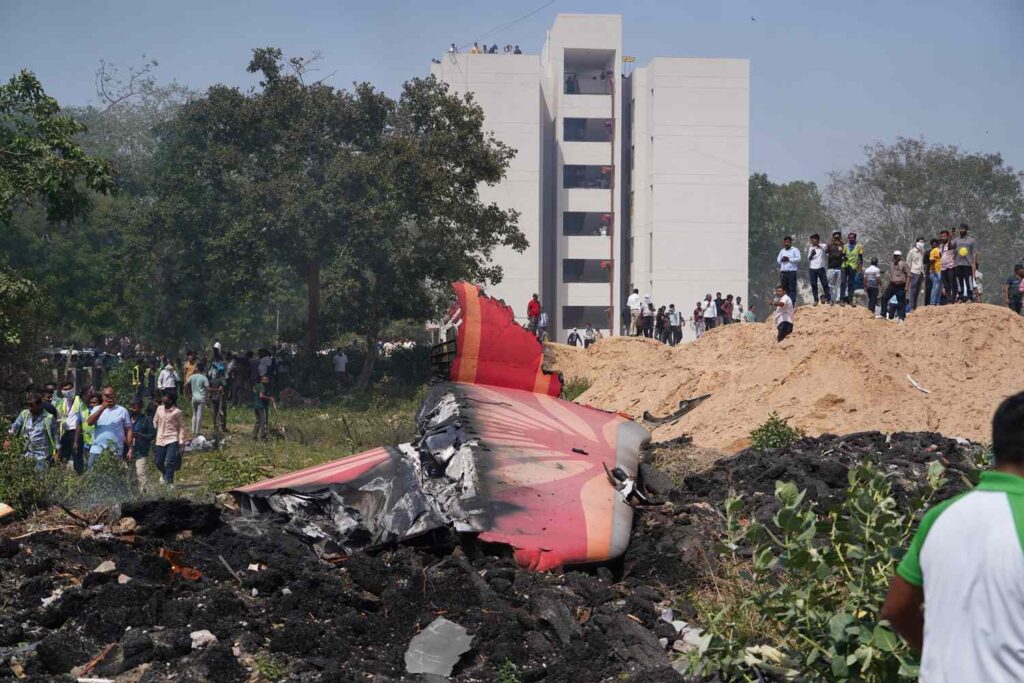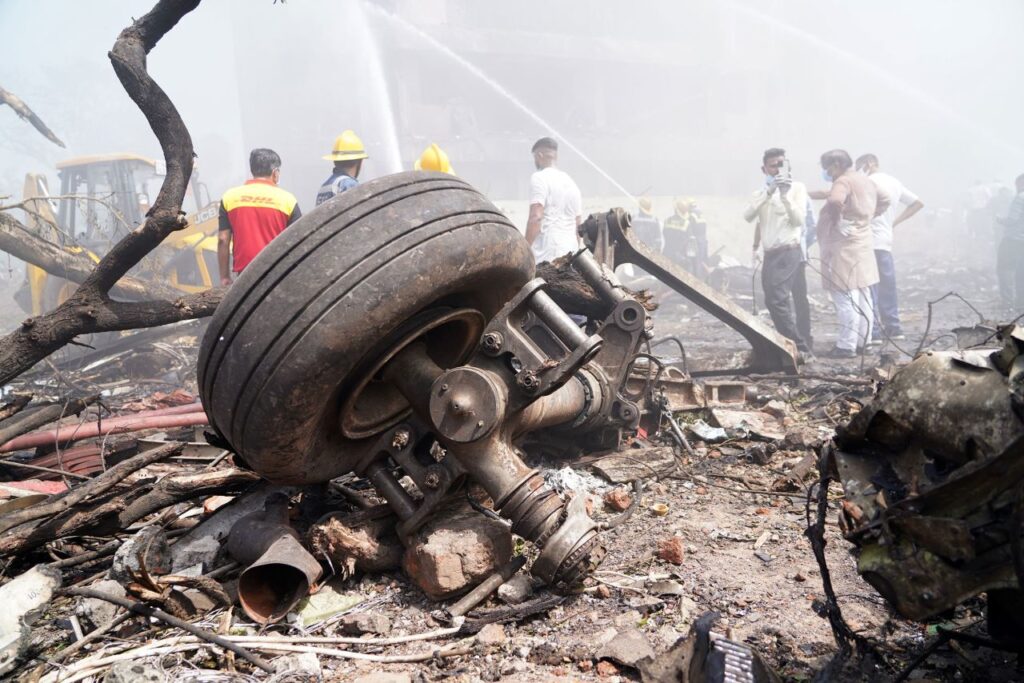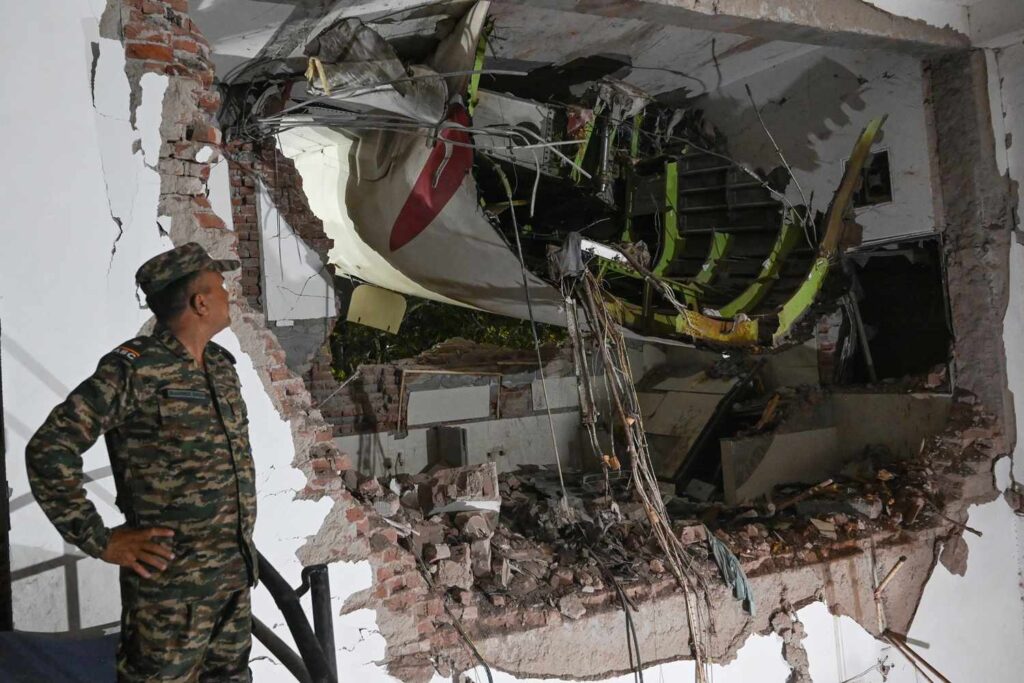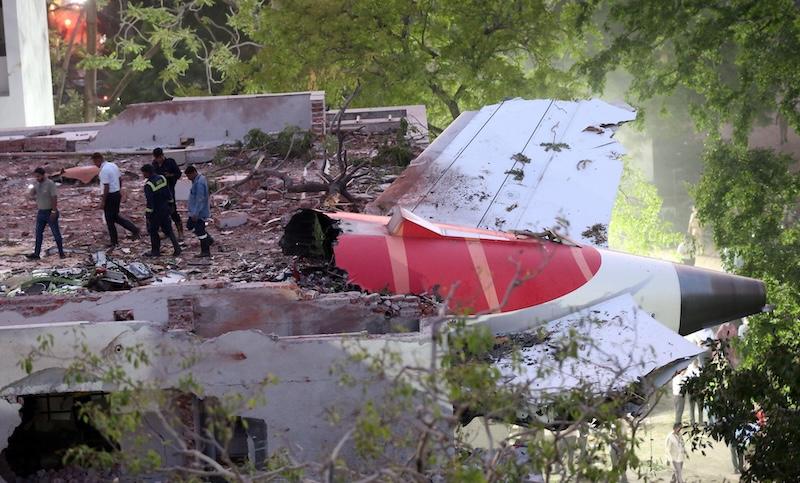Air India Crash in Ahmedabad – What Really Happened?
On June 12, 2025, the nation awoke to horrifying news—Air India Flight 171, bound from Ahmedabad to London Gatwick, had crashed just seconds after takeoff. The tragic incident claimed over 270 lives, marking one of India’s deadliest aviation disasters. This blog explores what happened, the ongoing investigation, technical insights, survivor accounts, and what this means for aviation safety in India and globally.
Timeline of the Air India Flight 171 Crash
Takeoff and Catastrophic Descent
The Boeing 787-8 Dreamliner took off from Sardar Vallabhbhai Patel International Airport at approximately 12:05 AM IST. Within 59 seconds, CCTV footage captured the aircraft struggling to ascend with its landing gear still deployed. Approximately 32 seconds into the flight, it lost altitude rapidly and crashed into a medical college hostel in Meghani Nagar, a densely populated area of Ahmedabad.

Casualties and the Lone Survivor
Death Toll and Ground Impact
There were 242 people on board, including passengers and crew. Tragically, 241 lost their lives, and 30–38 more were killed on the ground. The impact destroyed parts of the hostel and neighboring buildings, with dozens more injured from debris and fire.
Survivor’s Story: A Miracle Amidst Ruins
The only survivor, Vishwash Kumar Ramesh, a British national seated at 11A, managed to escape the wreckage. His seat area remained partially intact, allowing him to crawl out just before a fire consumed the fuselage.

What Could Have Caused the Crash?
Landing Gear and Aerodynamic Drag
According to initial findings from the flight data recorder (FDR), the landing gear remained extended, increasing drag and significantly reducing lift—possibly preventing the aircraft from gaining altitude.
Suspected Dual Engine Failure
Experts noted that a Ram Air Turbine (RAT) had deployed—indicating a potential dual engine failure or total electrical power loss. RATs only activate in extreme emergencies to provide limited power and hydraulic control.
Electrical System Anomalies
The Boeing 787 is known for its “more-electric” architecture, relying on electrical systems over hydraulics. Survivors and bystanders reported hearing a “loud bang” followed by silence and flickering lights—hallmarks of a catastrophic electrical malfunction.

Investigation Updates & Black Box Recovery
Multinational Investigation Team
India’s AAIB (Aircraft Accident Investigation Bureau) is working with:
US NTSB (National Transportation Safety Board)
UK’s AAIB
Boeing and GE Aviation engineers
Flight Recorders and Preliminary Analysis
FDR recovered within 28 hours.
CVR (cockpit voice recorder) found three days later.
Data suggests abnormal engine behavior, but analysis is still ongoing.
Maintenance & Inspection History
Reports confirm that the aircraft had undergone routine maintenance just six days prior. Investigators are reviewing maintenance logs, engine analytics, and crew health records.

Government Response and Safety Directives
Emergency Measures by DGCA
India’s Directorate General of Civil Aviation (DGCA) mandated:
Immediate inspection of all Boeing 787-8/9 aircraft using GEnx engines.
System-wide audits on landing gear deployment systems and engine health monitoring.
Airlines ordered to revise pre-flight checks for 787s operating in Indian airspace.
Compensation and Support
The Tata Group, owner of Air India, has pledged:
₹1 crore (~USD 116,000) for each deceased passenger’s family
Complete medical care coverage for injured victims
Legal assistance and trauma counselling for survivor families
Repercussions for the Aviation Industry
Boeing Under Scrutiny Again
While the Boeing 737 MAX crises were barely behind the aerospace giant, this tragedy reignited scrutiny around:
Software reliability
System redundancy
Mechanical and electrical safety in modern aircraft
Public Trust and Airline Protocols
Passenger confidence is shaken, prompting questions like:
Are pilot emergency protocols robust enough?
Is maintenance culture too cost-driven?
Can AI-based pre-flight diagnostics prevent such disasters?
Conclusion
The Air India crash in Ahmedabad is a heartbreaking tragedy and a pivotal moment in Indian aviation history. While investigations are still underway, early signs point to a mix of mechanical and electrical failures. Moving forward, India’s aviation community must prioritize transparency, rigorous safety audits, AI-enhanced diagnostics, and comprehensive crew training to restore confidence and prevent future catastrophes.
